One of the oldest ornamental fountains in Budapest, which was originally erected on Kálvin Square in 1883, is also one of its most beautiful, depicting the four great rivers of the Carpathian Basin as allegorical figures. A top stands the proud male figure of Danubius, representing the Danube, and around him, the three female forms of Tisza, Dráva and Száva. The magnificent fountain was designed by the highly acclaimed architect Miklós Ybl, who had a unique eye for proportion, while Leo Feszler carved the stoneworks.
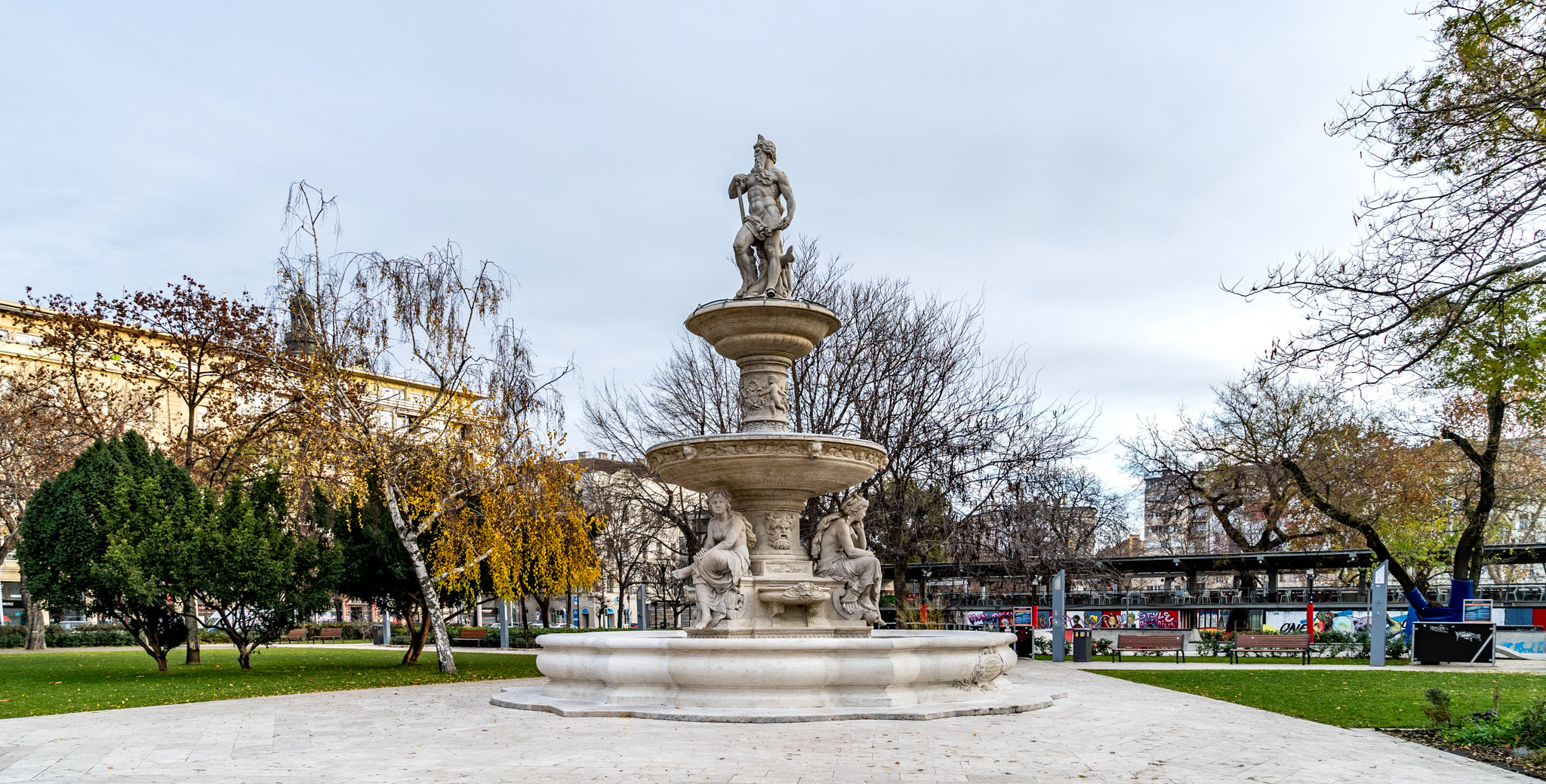 The beautifully renovated fountain has stood on Erzsébet (formerly Engels) Square since 1959 (Photo: Both Balázs/pestbuda.hu)
The beautifully renovated fountain has stood on Erzsébet (formerly Engels) Square since 1959 (Photo: Both Balázs/pestbuda.hu)

The anubius Fountaiin with its original sculptures and in its original place, at the middle of Kálvin Square in 1900, photographed by György Klösz (Source: Budapest Archives No.: HU.BFL.XV.19.d.1.08.042 /Fortepan/ No.: 82567)
It was removed from its original location on the increasingly busy Kálvin Square after World War II. It was erected on Erzsébet Square (Engels Square at the time) in 1959 following a complete renovation and the re-carving of statues damaged in the siege.
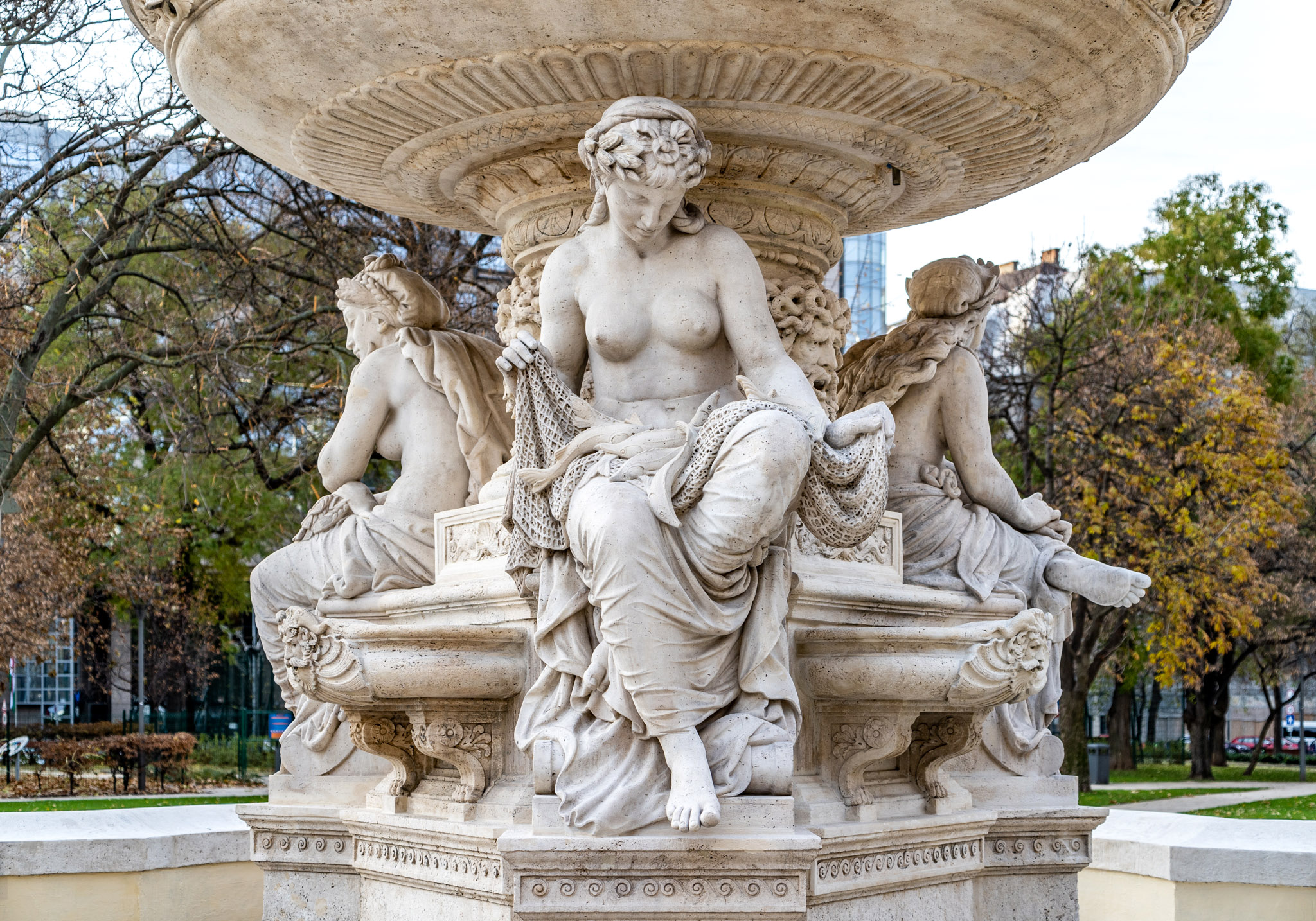
The recently renovated sculptures of the fountains are not the originals: the damaged statues were completely re-carved after the war. Tisza holding a net in her lap (Photo: Both Balázs/pestbuda.hu)
The restoration of the well, which was last renovated in 2000, began in September, and was made necessary due to weather, vandalism, and faults in the 1959 erection. Zsolt Zoltán Varga, the leading restorer of the renovation commissioned by the Budapest city council told PestBuda: During the restoration the fountain was cleaned of limestone and dirt with a sandblasting technique and a special chemical process, revealing the original detailed patterning of the stonework.
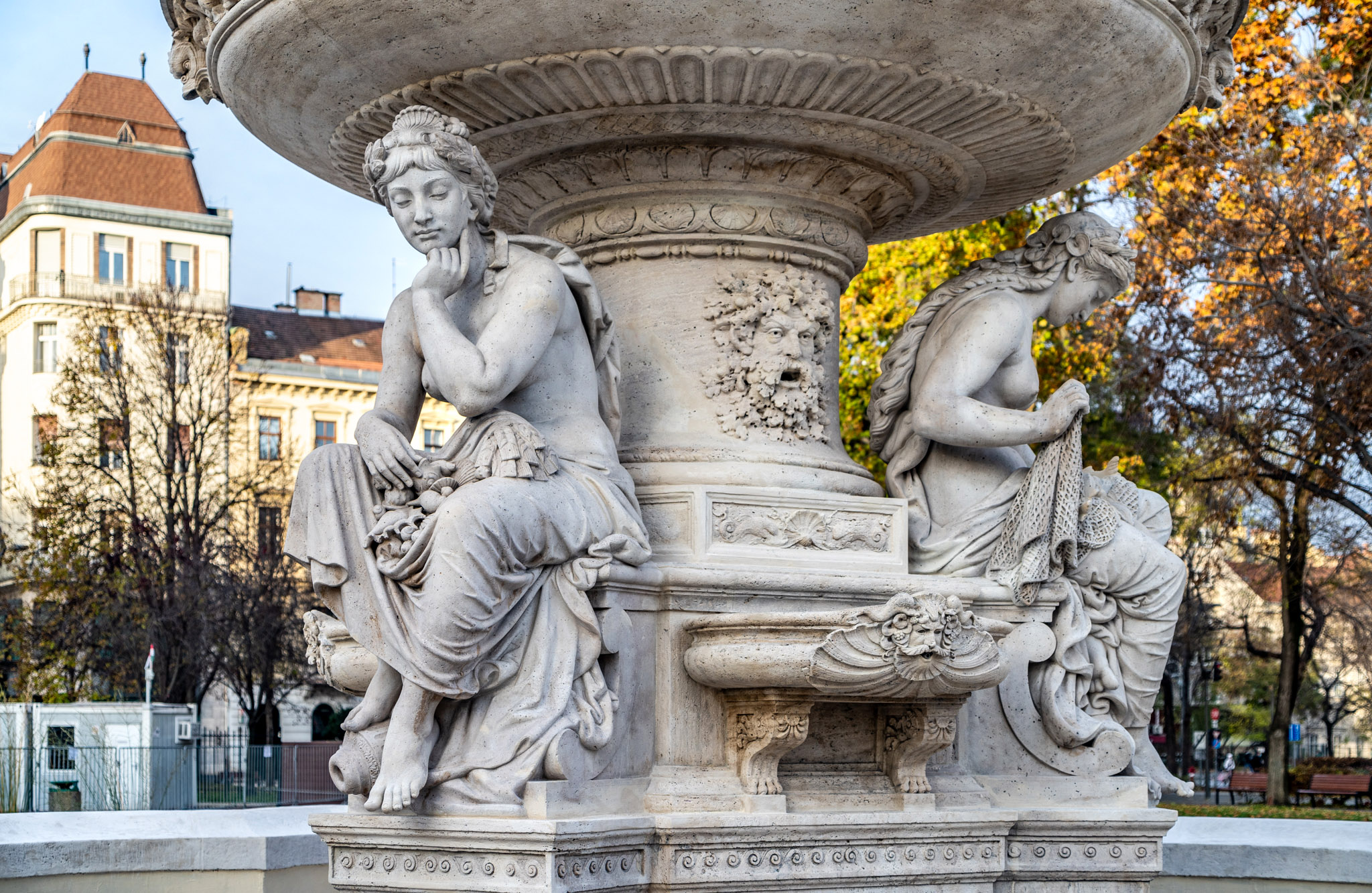
Drava with shells and snails in her lap (Photo: Both Balázs/pestbuda.hu)
Meanwhile, old, inappropriate additions and foreign materials were removed. The missing details of the sculptures were restored using a special German mortar uniquely made for the statue and Italian stone, as the Budakalász limestone originally used, has become practically inaccessible by the present day.

The foot of the female figure embodying the Sava was also replaced, after being broken of by vandals in 2014 (Photo: Both Balázs/pestbuda.hu)
The foot of one of the most beautiful female figures, Sava was among the re-carved parts. The foot was broken off the statue by vandals in 2014. The toe of another statue, can also newly be seen on the sculpture again, in its original form.
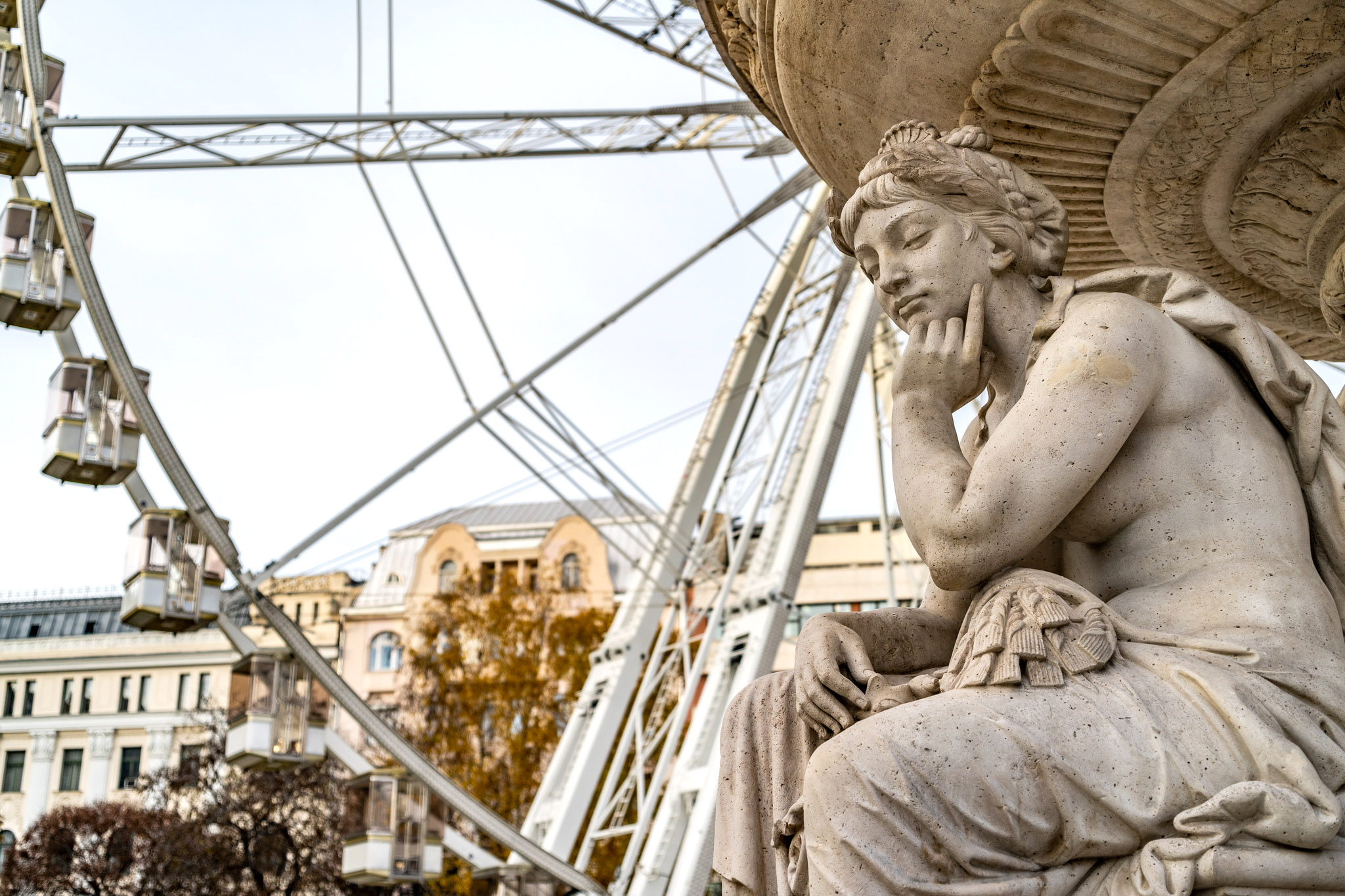
Beautiful details (Photo: Both Balázs/pestbuda.hu)
During the work, the cracked watertight layer of the well was replaced and the gaping finger-wide gaps between the stones of the lower water basin with a special mortar, restoring its intended uniform, smooth surface. (The gaps were caused by errors in the 1959 erection of the statue.) Zsolt Zoltán Varga added that the upper two lead bowls are in good condition, and they did not require any repairs but were cleaned.
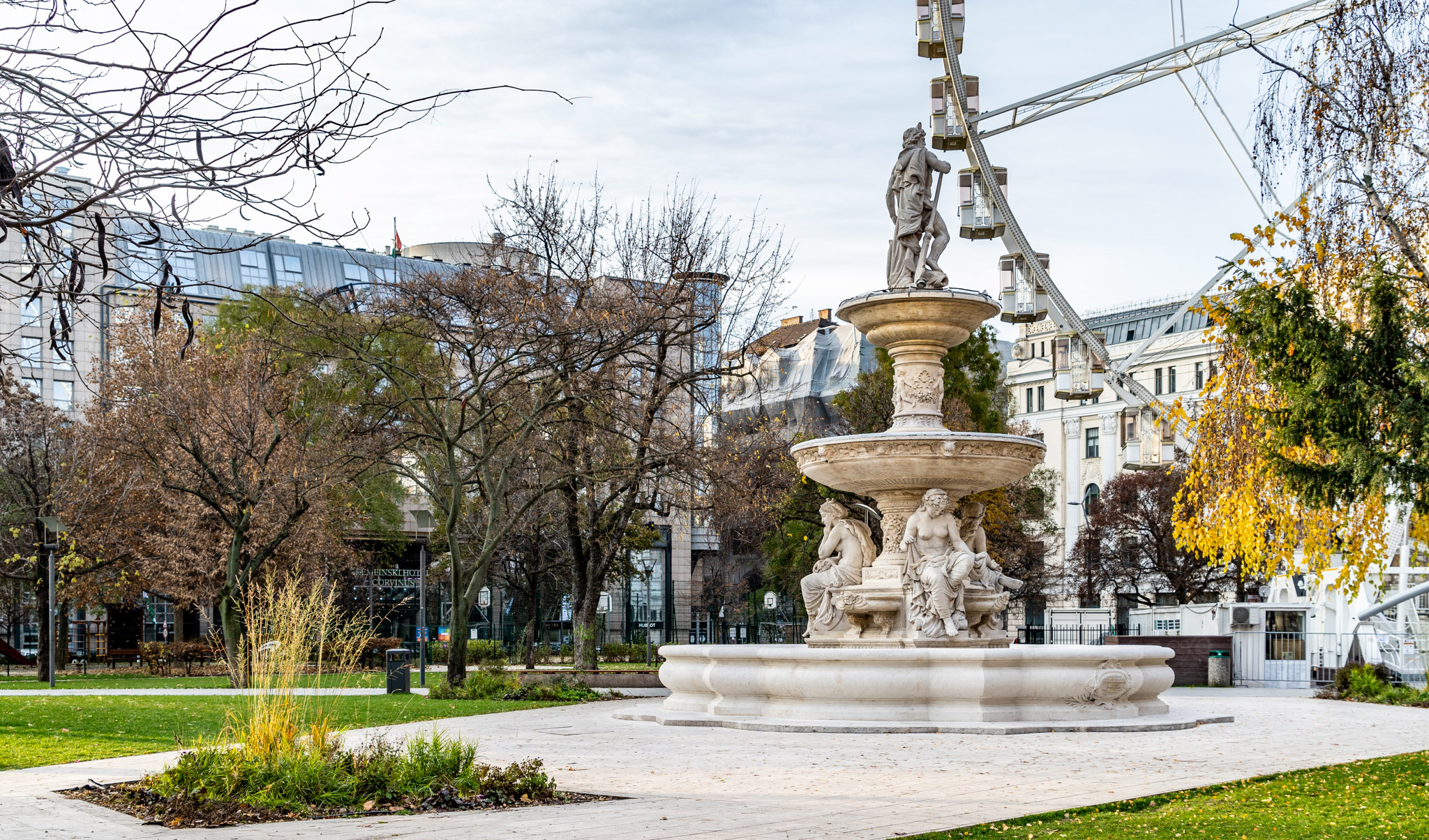
Finger-wide gaps in the lower bowl cause by errors in positioning in 1959 were filled with special mortar and the cracked waterproofing layer replaced (Photo: Both Balázs/pestbuda.hu)
In addition, the two plaques on opposite sides of the well were re-gilded. These ornaments bare the names of the original creators, architect Miklós Ybl and sculptor Leó Feszler, and pay tribute to the work of Dezső Győri, who carried out the post-war restoration.
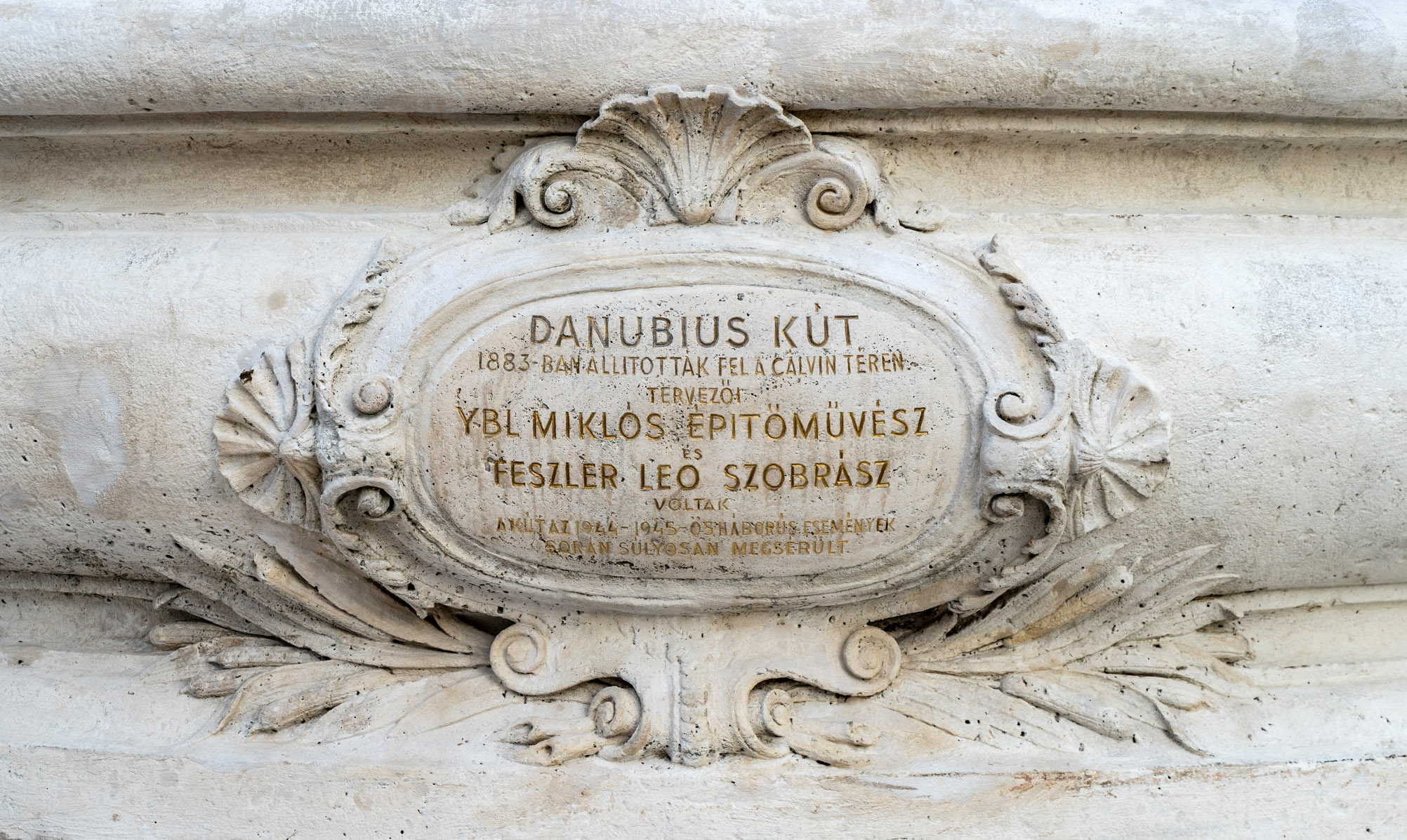
The plates on either side of the well were re-gilded (Photo: Both Balázs/pestbuda.hu)

Dezső Győri was commissioned to carve the sculptures visible today (Photo: Both Balázs/pestbuda.hu)
Passers-by have been able to admire the fountain since the beginning of November. It again shines in its former glory as it sleeps through the winter. Hopefully, if cared for properly, it will not need another restorations for decades to come.
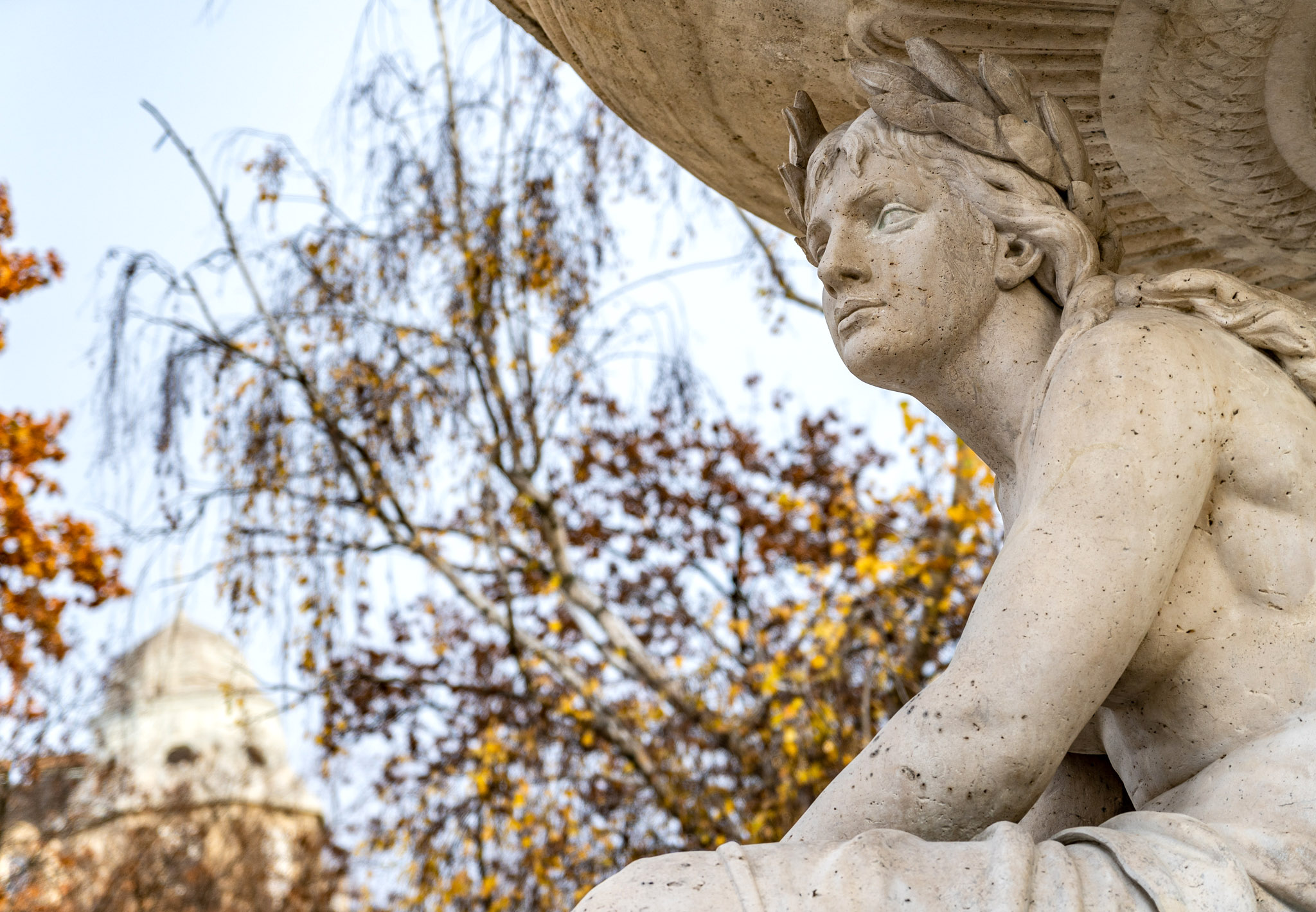
Sava looking over the square (Photo: Both Balázs/pestbuda.hu)
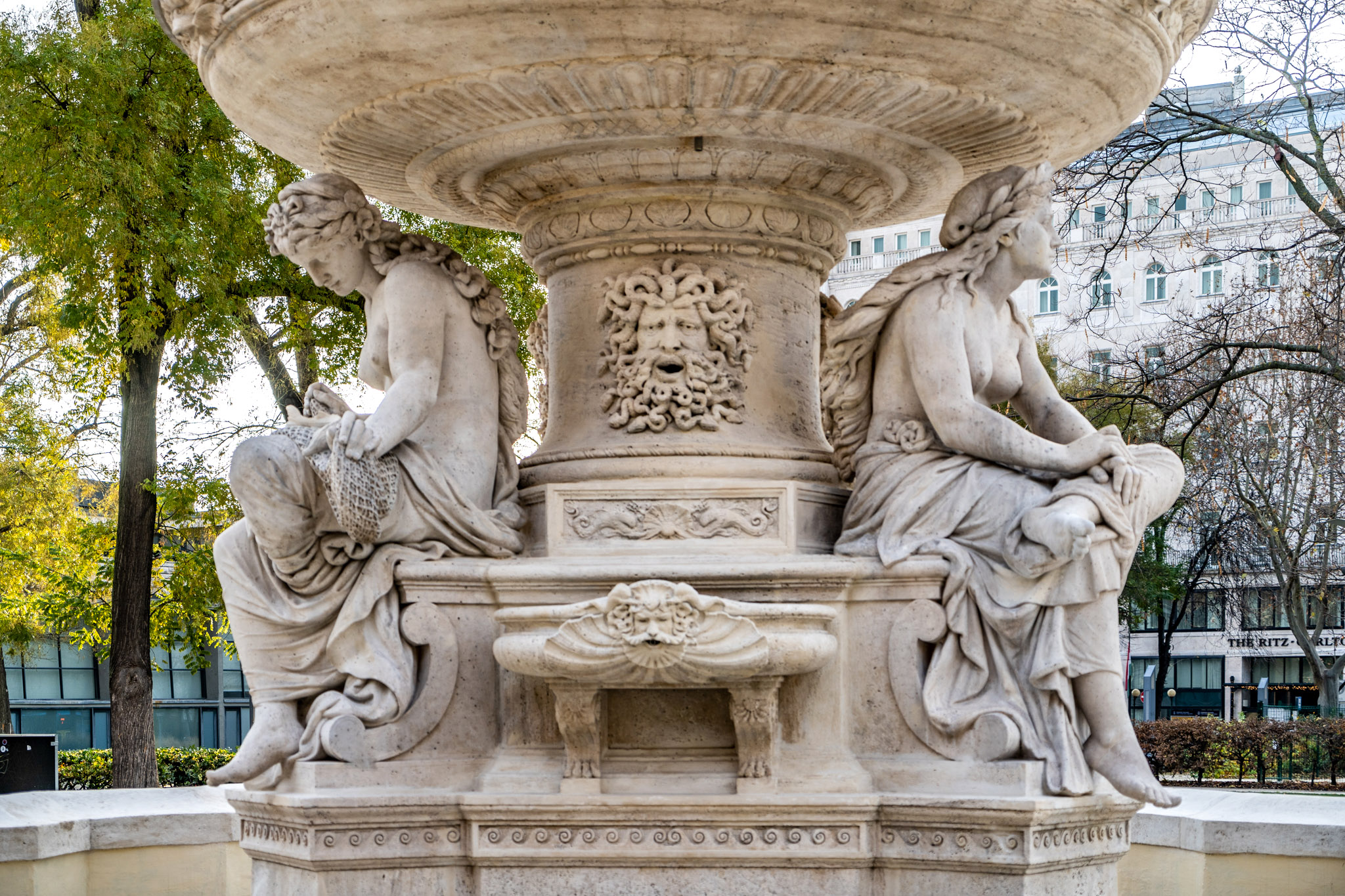 Tisza and Száva (Photo: Both Balázs/pestbuda.hu)
Tisza and Száva (Photo: Both Balázs/pestbuda.hu)
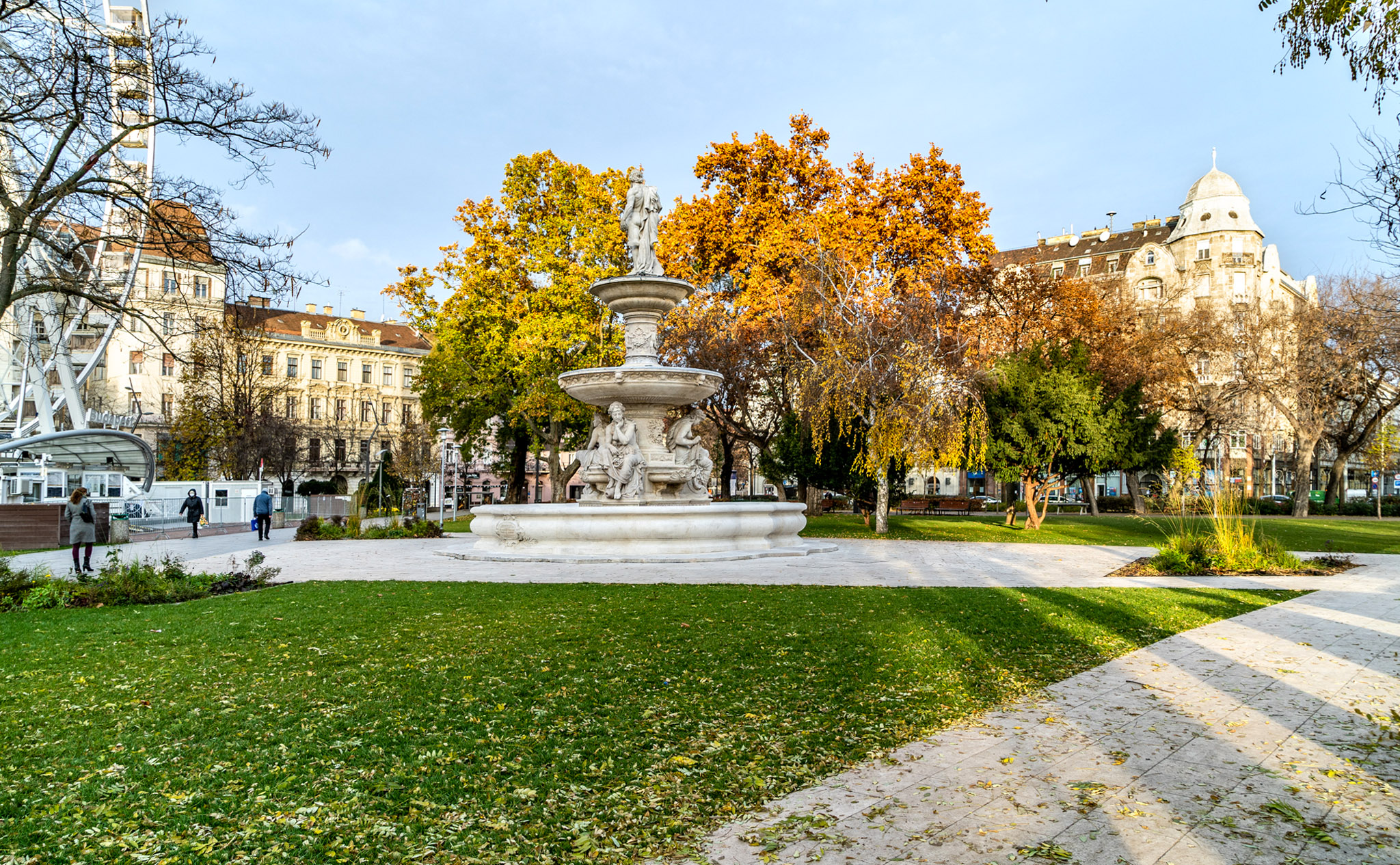
The new location has proven to be a fitting choice, to be good: the fountain fits better into its current surroundings than the overcrowded Kálvin Square (Photo: Both Balázs/pestbuda.hu)
Cover photo: Statues of the Danubius Fountain, the figure of Sava (Photo: Both Balázs/pestbuda.hu)

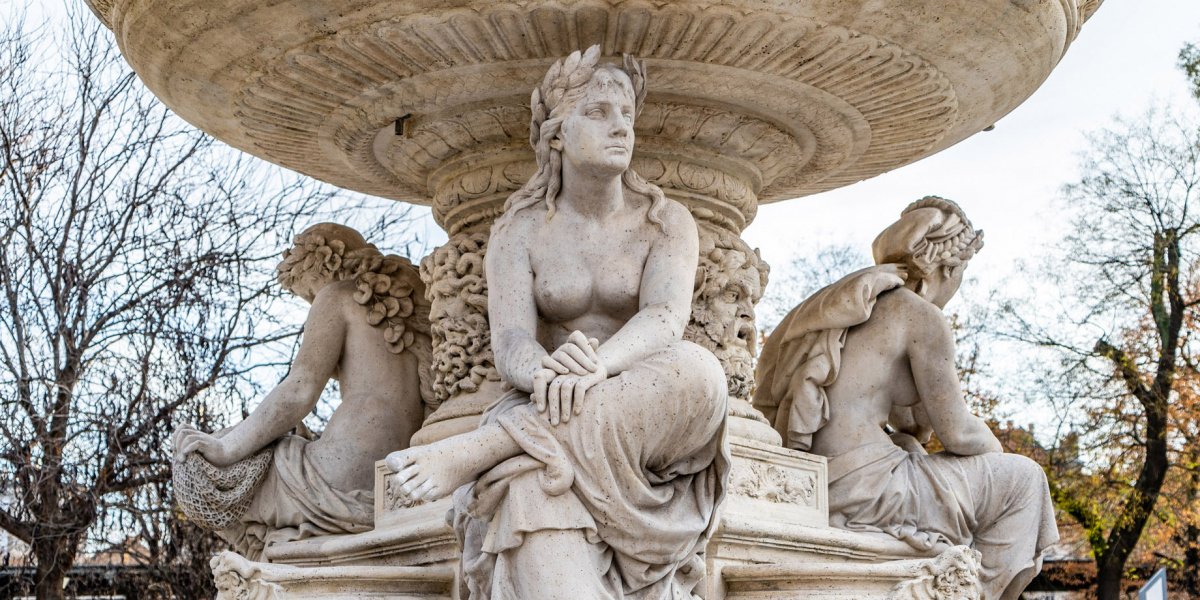



































Hozzászólások
Log in or register to comment!
Login Registration